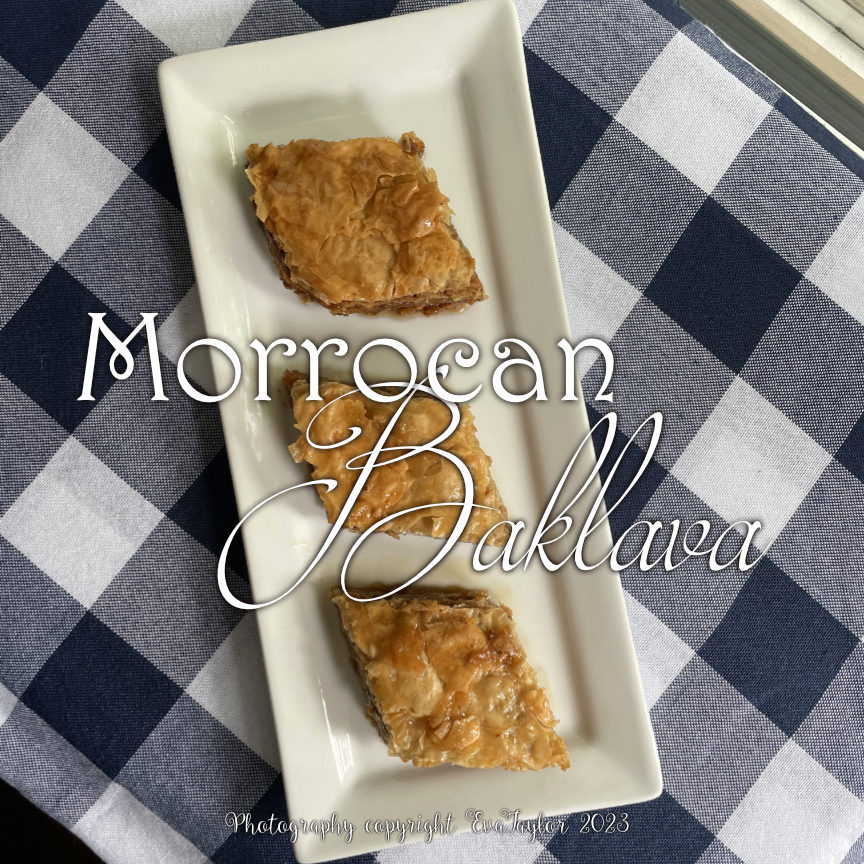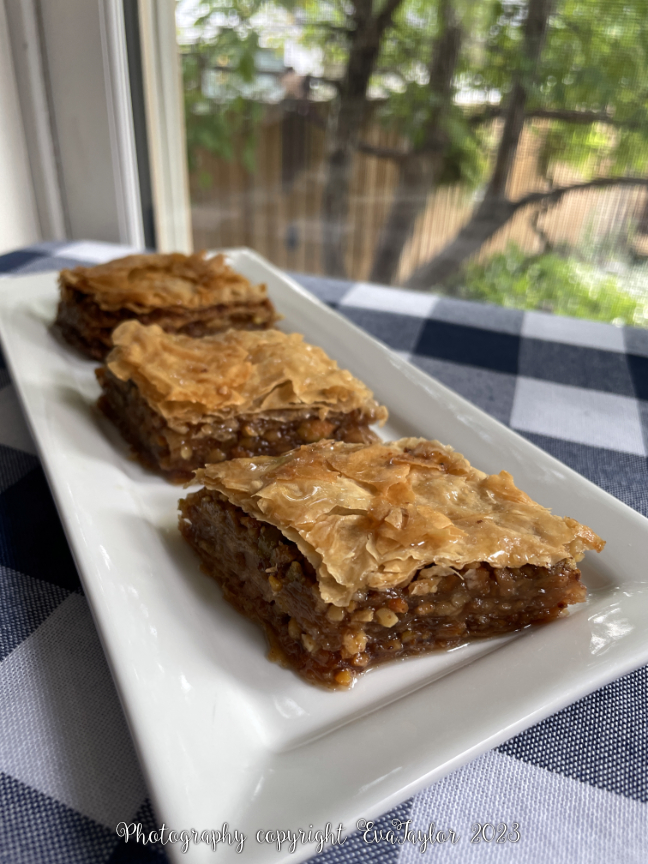It’s a very happening week in Toronto because we have the Toronto International Film Festival (TIFF) — the world’s largest film festival (according to Wiki, obviously a Torontonian wrote it!). We have been graced with some of the biggest stars, George Clooney (be still my heart), the BrAngelina’s, Madonna, Robert DeNiro to name a few. JT and I have been fortunate enough to score tickets from friends in the past, but unfortunately, not this year :-(, so to feel part of the action, we decided to get all dolled up [you know, just in case we bump into someone ;-)] and head downtown to the Ritz (we [I] heard Mr. Clooney was staying there). The Ritz is a brand new hotel in Toronto, opened in April, I think. We’ve been fortunate enough to have stayed in several Ritz Hotels in US and Canada and the one thing that is consistent is the quality of service — always exceptional. We had a glass of wine at TOCA and then we ventured to the back patio DEQ (say Deck) for another glass and some dinner.
At TOCA we were served a little plate of deep fried capers (not to my taste, capers were crunchy but the brininess was lost), crispy maple bacon (very weird taste, also not my cup-a-tea) and some roasted salted corn (very tasty). A pleasant surprise was that a very tasty Pinot was only $10 a glass. Last year we went down to the Four Seasons Hotel (another TIFF hangout, we actually saw Henry Winkler with his family) and the wine was $15 a glass, we had two each and paid about $80 with taxes — NO FOOD!! Dare I say, the Ritz is way classier!

- Snacks at TOCA at the Ritz Carlton Toronto
TOCA Overall rating (in my opinion): Decor 4/5, service 4.5/5, food na/5, Value 4/5, Noise: 4/5 (1 being very noisy, and 5 being very quiet).
After our glass of wine, we asked the manager to direct us to the other bar with the ‘great patio’ — he actually escorted us there. That’s service! I’m used to “see that sign at the far right, head that way and make a left, you can’t miss it!” type of service! He sat us at the patio bar as more than half the restaurant was closed for a private TIFF party. Later, we found out Mr. Clooney spent Friday and Saturday night at this bar [OMG, I may have been sitting on the exact same bar stool that HE sat on — damn, I was wearing white pants, not so easy to avoid washing ;-)]
We enjoyed DEQ’s specialty flat bread, which is kind of like a pizza, it had Chorizo and artichokes, quick roasted tomato goat cheese – it was delicious! JT was still hungry so we ordered Bruschetta, 6 pieces, also a signature dish (you order the amount you want, 1 each of three flavours or two each); the flavours were tomato-basil, Ingersoll burrata-pesto and speck asparagus with a poached quail egg. I was not that hungry but managed to scarf down the speck asparagus with the quail egg and the tomato-basil – both were delicious. The bartender was very nice, chatted us up for some of the time. We stayed until a little after 11 work beckoned; sadly the TIFF party that reserved the other half of the patio did not start before we left. Oh well, perhaps I’ll bump into Mr. Clooney some other time (in my dreams, perhaps)!
DEQ Overall rating (in my opinion): Decor 4.5/5, service 4.5/5, food 4/5, Value 4/5, Noise: 4/5 (1 being very noisy, and 5 being very quiet).
Back to cooking! We are having good friends over for dinner on Saturday, and to help jump start our Moroccan adventure, we decided to have the theme as Moroccan food. I tested this recipe and it turned out pretty good. I am planning to have three little dessert samplers for Saturday night, Sellou is one of them.
“Sellou (or sfouf) is a unique unbaked Moroccan sweet made from toasted unhulled sesame seeds, fried almonds and flour that has been browned in the oven. Packed with calories and nutrients, it’s traditionally served during Ramadan and after childbirth, when there’s greater need to restore energy and maintain good health. It’s also served at Eid, weddings and other special occasions.” from About.com
Since I am not familiar with Moroccan cooking, I decided to not venture too far from to the recipe, which I picked up from Cooking with Alia. I did add a little lemon rind, you know how much I love almonds and lemon together. It is not as sweet as it sounds, and it’s got some very complex flavours going on. Although I restrained the amount of Cardamon I added, it was still very perfumey but it mellowed out on day two – I suspect by the weekend it will have rounded out beautifully. I also cut the recipe into 1/3, because I am serving three desserts I didn’t want too much of it. I suspect it will be very rich with all the nuts after a meat laden meal. The baked flour is a very strange thing indeed, and although it is rather stinky while baking, it really added some earthiness to the flavour. Not sure if I would add it again, trying to refrain from carbs, but it was interesting. The recipe below is pretty much verbatim from Alia, with the exception of the parts I’ve altered in brackets.

Sellou a traditional Moroccan Dessert
Ingredients:
- 200 grams of flour
- 125 grams of roasted almonds – you can also buy raw blanched almonds and roast them or fry them yourself
- 100 grams of sesame seeds (I used both black and white for interest)
- 125 grams of honey
- 75 grams of powdered sugar
- 1 ½ teaspoon of anise powder
- 2 teaspoon of cinnamon powder
- a pinch of salt
- ¼ teaspoon of ground mastic gum (I did not have this, so I omitted it)
- 113 grams of butter (1 stick)
- 1-2 tsp grated lemon rind (this was not part of the recipe)
- Secret Ingredient 1: 125 grams of roasted peanuts (I only had natural crunchy peanut butter, so that is what I added instead)
- Secret Ingredient 2: ½ teaspoon of cardamom powder (pinch or less)
Directions:
-
Browning the flour:
1- preheat your oven to 350° F
2- place the flour in a baking pan and spread it evenly
3- cook the flour in the oven for about 30 minutes
4- To avoid smoke in your house, and for the flour to cook evenly and not burn, you need to stir it every 5 minutes until it is done
5- You will notice that the color of the flour will start changing and the flour is done when it has a deep golden brown color
6- Sift the flour – use a spoon to break the flour lumps
7- Let the flour cool down before using it.
-
Preparing the other ingredients:
-
1- while the flour is cooking, you can actually start roasting the sesame seeds in a skillet on medium-low heat. Stir frequently so they do not burn.
2- This will take about 20-30 minutes. remove the seeds from the heat when they darken and become fragrant – you can taste them, they should have a nutty flavor.
3- Using a food processor, mix the roasted peanuts and the roasted almonds together.
If you prefer sellou to have a fine texture, then mix the nuts until you get a powder.
I personally prefer my sellou to be crunchy, so I only half mix the nuts to keep solid parts.
-
Mixing the dry ingredients:
Now that we are ready, we are going to mix all the dry ingredients together (flour, sugar, spices, sesame seeds, almonds, and peanuts).
-
the last step then is to add the melted butter and honey. And at the very end, mix in the lemon rind.
Mix well using a spatula until all the butter and honey are incorporated into the mixture.
Now, if you want to preserve the moist sellou, just put it in an airtight container and place in the fridge for up to 1 month. Just make sure to bring it to room temperature before serving.
-
Serve the Sellou in little cups, or shape a dome out of it, cover it with powdered sugar and decorate roasted almonds.
Read Full Post »










































